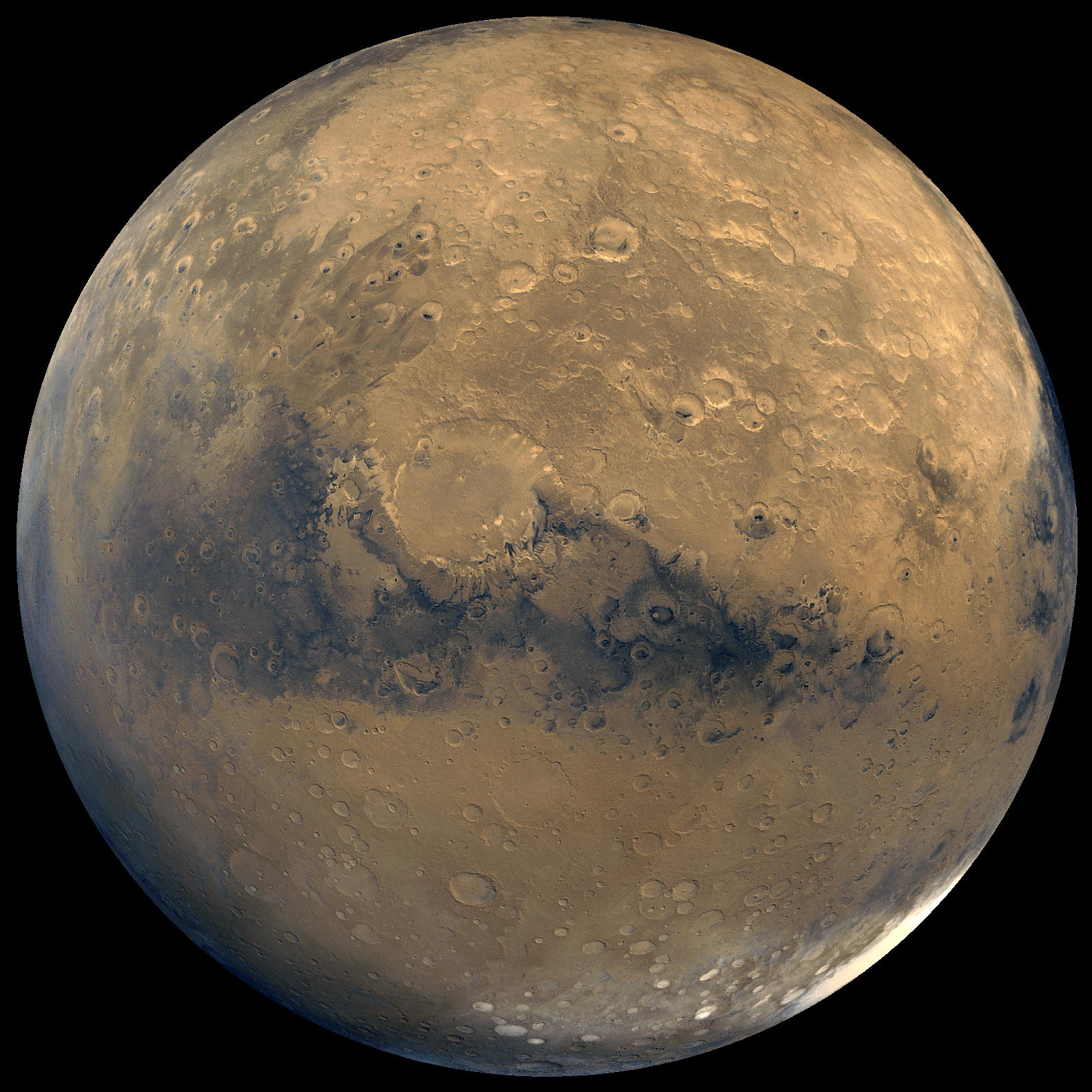Mars Lost Most of Its Atmosphere Billions of Years Ago, Scientists Say

Mars is not a nice place to live: The Red Planet is cold and dry, and its thin atmosphere is dominated by carbon dioxide.
And, according to new data collected by NASA's Mars rover Curiosity and studies of ancient Martian meteorites, the planet's atmosphere hasn't changed very much in about 4 billion years.
Scientists suspect that, after Mars' violent formation about 4.5 billion years ago, something caused the planet to lose its atmosphere, which is now only about 1 percent as thick as that of Earth. [Mars Rover Curiosity's 7 Biggest Discoveries (So Far)]
"A lot of the atmosphere of Mars might have been lost pretty rapidly," said Paul Mahaffy, a scientist at NASA's Goddard Space Flight Center and lead author of one of two new studies of the Red Planet's atmosphere published online today (July 18) in the journal Science.
"That's not too surprising, because [somewhere] between 3.5 [billion] and 4 billion years ago, you had all this stuff flying around the solar system, and the planets were getting bombarded with a lot of impactors that formed all these craters on the moon and on Mars, so that very active period might have caused a lot of the atmosphere to go away," Mahaffy added.
Sensitive measurements
These results represent the most sensitive analysis of Mars' atmospheric conditions since NASA's Viking landers probed the planet's air in the 1970s. Many of Viking's measurements on Mars were accurate, but others had a very wide margin of error, said Christopher Webster of NASA's Jet Propulsion Laboratory in Pasadena, Calif., who led the other new study.
Get the Space.com Newsletter
Breaking space news, the latest updates on rocket launches, skywatching events and more!
The Curiosity rover narrowed that margin with its sensitive tools.
"We fundamentally agreed with the Viking measurements — with a couple of exceptions," Mahaffy told SPACE.com. "We found a little bit more argon than Viking had reported, [and] a little bit less nitrogen."
The new measurements from Curiosity provide a wealth of data that the research team used to uncover the current and past atmospheric environments on Mars in more detail than ever before.
Curiosity's instruments were able to measure the chemical composition and isotopic ratios of various elements found in the Martian atmosphere.
These ratios give scientists a sense of the kinds of elements that have been escaping Mars' atmosphere over time, as well as a more accurate glimpse of the composition of the Red Planet's air.
"[Isotopic ratios] are really a window into the whole time history of Mars, the whole evolution over the whole 4 billion years since it was formed," Webster said during Science's weekly podcast. "They tell us about sudden changes, like if there is cometary infall or volcanic eruptions."
Meteorite comparisons
The research teams also used data from Martian meteorites on Earth to put Curiosity's findings into context.
As pieces of Earth-bound rock left the Red Planet billions of years ago, the Martian rocks captured the elements that made up Mars' atmosphere at the time, Mahaffy said. Scientists are able to analyze these rocks, giving them a snapshot of what the planet's atmosphere might have looked like as the meteors were expelled.
Webster, Mahaffy and their colleagues compared their samples of the Martian air taken by Curiosity to samples of Martian atmosphere trapped inside meteorites that fell to Earth from Mars.
Because scientists have precisely measured the composition of Martian rocks that landed on Earth, the team could compare the Martian atmosphere 4 billion years ago to that of the Red Planet today.
"Once we map out and understand the atmosphere as we have, we are now, with Curiosity, looking at the dust samples, and drill and rock samples — so it puts all the analysis of the rocks into context with the basic atmosphere," Webster said during the podcast.
Scientists will have more data to compare these findings to when NASA launches its MAVEN mission. The Mars-orbiting probe is scheduled to launch this November and is expected to help fill in the blanks about how Mars' atmosphere was depleted over time.
Follow Miriam Kramer @mirikramer and Google+. Follow us @Spacedotcom, Facebook and Google+. Original article on SPACE.com.
Join our Space Forums to keep talking space on the latest missions, night sky and more! And if you have a news tip, correction or comment, let us know at: community@space.com.

Miriam Kramer joined Space.com as a Staff Writer in December 2012. Since then, she has floated in weightlessness on a zero-gravity flight, felt the pull of 4-Gs in a trainer aircraft and watched rockets soar into space from Florida and Virginia. She also served as Space.com's lead space entertainment reporter, and enjoys all aspects of space news, astronomy and commercial spaceflight. Miriam has also presented space stories during live interviews with Fox News and other TV and radio outlets. She originally hails from Knoxville, Tennessee where she and her family would take trips to dark spots on the outskirts of town to watch meteor showers every year. She loves to travel and one day hopes to see the northern lights in person. Miriam is currently a space reporter with Axios, writing the Axios Space newsletter. You can follow Miriam on Twitter.